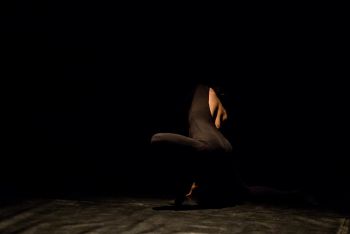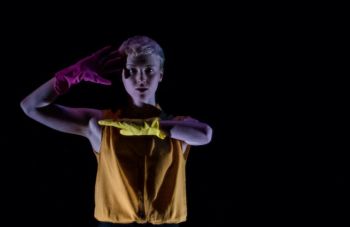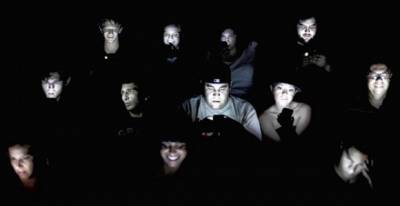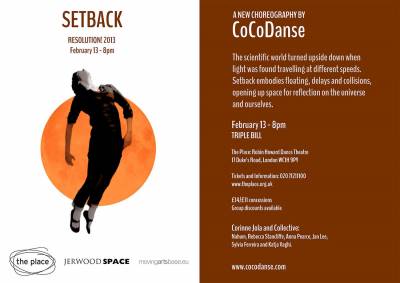- Details
-
Category: Blogs
-
Published: Sunday, 02 December 2012 02:07
-
Written by Victoria Drew
“Circles to square and cubes to double would give a man exercise trouble” - but not to Itzik Galili!
This is a review of The Israeli Ballet’s performance of Israeli choreographer Itzik Galili’s work. “Circles to square and cubes to double would give a man exercise trouble” is a quote by mathematician Mathew Prior. Why am I quoting maths in a dance blog? You will have to wait and see...
I have always been a fan of the ballet, making numerous trips to see the Royal Ballet, and I would bend over backwards to get tickets for the American Ballet Theatre whenever they arrived at Sadler’s Wells (which was always a race for best seats). Most of all, of course, for my favourite company, Birmingham Royal Ballet. The BRB are my favourite ballet company: not just because I was born and raised in the West Midlands, but due to their adaptability from classical to more modern pieces and how they always give me feelings of butterflies (whether happiness or emotional). I was therefore very excited on Thursday night to get my first viewing of The Israeli Ballet at the Jerusalem Theatre. In a country with an explosive dance scene, was I about to have a new favourite ballet company?
I would first of all like to note the Jerusalem Theatre itself: I love coming here as it reminds me of home. The concrete building, the modernist touch to the architecture, the winding and overlapping hallways and the 70’s styled seating: it all reminds me of how the Barbican Theatre or Royal Festival Hall looks and feels. So I always get joy going to the Jerusalem Theatre.
Another factor to add to my excitement of the evening was that I thought I was going to see one of my favourite dance pieces, A Linha Curva by the choreographer Itzik Galili. I have seen this dance work three times, performed by the Rambert Dance Company, as I loved it so much.
Rambert Dance Company performing A Linha Curva.
A Linha Curva has a high energy Brazilian feel, with complex canons and extremely good use of lighting with square patterns, which engaged Rambert's dancers with a sense of “humanness”. As the dancers “partied” through the dance, it felt that the Rambert dancers were at a party, giving us a sense of who they were individually. The piece appeared to be choreographed around the squared chessboard lighting and through the upbeat percussive score.
On the picture of the poster for The Israeli Ballet I was excited to see the same coloured chessboard lighting: was I to see my favourite piece again? I was wrong, though I got the right choreographer: Itzik Galili. Galili is Israeli, a former Batsheva dancer who has choreographed for Batsheva Dance Company, Nederlands Dans Theater II and more recently the English National Ballet. His use of lighting, complex use of canon and high-paced but still clean-cut choreography appear to be a signature of his work. The number of groups of dancers onstage also seem to be integral to his work, giving it a mathematical approach, making his work so stunning and aesthetically pleasing. “Wherever there is number, there is beauty” (as quoted by mathematician Diadochus Proclus) - yes, here is the reasoning for the maths quotes, more to follow!
The Israeli Ballet performed three of his works that evening, including Hikarizatto, and And The Earth shall Bear Again, which the English National Ballet premiered this year.
I feel the first mistake of the evening was having such similar works by the same choreographer in the same evening, as Galili’s works all had same feel and texture on the outside. This appeared to my friends as “boring”, but what they did not pay attention to was the detail of his work which I so admired. As the great mathematician Henri Poincaré said “mathematicians do not study objects, but relations between objects. Thus, they are free to replace some objects by others so long as the relations remain unchanged. Content to them is irrelevant: they are interested in form only”. If you are a dance teacher, like me, you should be using his work as a guideline for successful canon. In Hikarizatto and And The Earth shall Bear Again, the dancers moved in and out of each other’s phrases smoothly and with such ease as if they were dancing on ice. It was much unexpected when they did the canon in such unexpected ways so you were always kept on your toes as an audience member. For example, at a few points, the dancers form a line at the front of the stage and some start a movement pharse with arms gestures coming up and down from the floor with swings and pliés. Some of the dancers would join in with canon of that phrase, an odd dancer would then start another phrase, and then another dancer would reverse the new phrase and maybe return to the original canon. It was all unexpected and kept you wanting more.
The lighting for Hikarizatto was stunning and added to the drama and unexpectedness of the piece. At one point, the dancers moved back in their pairs and in canon as they left the stage with a repeated phrase within squares of light. However, as the dancers backed towards upstage right, the last couple in the canon appeared to “switch off” the squared lights. This sense of lighting showing and hiding movement seems to be played with in all of Galili’s pieces. Later, during a beautiful duet at the front of the stage, there was a line of dancers moving from stage right to left in a slow continuous manner. They were lit very dimly so they were only slightly seen. This made them even more intriguing and a beautiful contrast to the striking strong broken ballet duet at the front. In an interview, Galili told the Jewish Chronicle that “lighting is poetry. It can define personalities, it can distinguish between cold and warmth, And it can also define space.” The lighting for Hikarizatto was used in a way that it almost became the third performer in the space, as if the lighting was dancing with the dancers.
Hikarizatto
The movement style of Galili is very hard to describe within one blog, but I will generalise. At moments there are obvious ballet structures from extended arabesques, to pirouette on piquée’s, to traditional partnering of boys supporting girls and pointe work. However between these moments there is an almost melting, breaking of joints and back to extension. There is also a sense of each dancer connecting to unusual points with their own bodies. At times I feel in Galili’s choreography that the dancers both duet with themselves and with their partners.
Earlier I mentioned that the first mistake was The Israeli Ballet doing three similar Galili pieces in the same evening bill. The second mistake is that I don’t think The Israeli Ballet was ready for Galili’s technical, intricate and fast-paced work, and it appeared too complex for their abilities. Certainly they could perform the work, but didn't really get to the depth and process of Galili's work! I felt very critical of the dancers as I left the theatre, with a few “off moments” playing on my mind. At one point, one of the dancers fiddled with her costume and pulled it down, a moment of beautiful and complex canon ruined by a very confused dancer, but the most shocking moment was when a dancer went to run on stage, hesitated and retreated, only then to be pushed back on stage by another dancer!
The Israeli Ballet Company, however, has only been dancing in contemporary dance pieces for the last year; the ballet company itself has only been going since 1967, which is relatively young, and it remains the only ballet company in Israel to be performing the big international full-length ballets. Nevertheless, I did feel a bit disappointed as I felt they didn’t do Galili’s work justice, especially after seeing his work performed by Rambert Dance Company. I was expecting to see that Israeli “fire in the belly” but I didn’t, I just saw hesitance.
This made me stop and think: for the last three months, I have been raving about how great the Israeli dance scene is, especially recently as I was interviewed by BBC Radio 4 about the Israel Dance Scene. I spoke about how wonderful and unique Gaga is, how technically brilliant and fierce the performers of Batsheva are - but wait. I had forgotten the amazing dance talent we have back home in England. We have a rich and diverse dance history with an ever-growing excellence in dance training and companies. Rambert Dance Company are great, bringing their versatility, their talent and energy to each performance. Even Galili mentioned Rambert to The Stage newspaper: “Stunning dancers. You English are lucky to have them – they are God’s trophy in your hands.” This is definitely true as we know that Einstein said that “dancers are the athletes of God”. We are very lucky to have great companies like Rambert or Akram Khan. So I still have BRB as my favourite ballet company, although my favourite dance company still remains to be Batsheva Dance Company... come on England, take them on!
You can listen to Tori's BBC interview here: www.bbc.co.uk/podcasts/series/ipm






 One thing we are used to in dance is the too-short runs which most shows have (unless it's a Matthew Bourne production), which typically leaves people with only one or maybe two chances to catch a show before it goes. And if you miss that chance to see it but really want to see it, what do you do?
One thing we are used to in dance is the too-short runs which most shows have (unless it's a Matthew Bourne production), which typically leaves people with only one or maybe two chances to catch a show before it goes. And if you miss that chance to see it but really want to see it, what do you do? Something different, for a change. Those of you who follow me on Twitter or are a Facebook friend will know that I've recently acquired a surfeit of blood clots, so I might as well write about them - seeing as I can't do much else while I wait to recover from them.
Something different, for a change. Those of you who follow me on Twitter or are a Facebook friend will know that I've recently acquired a surfeit of blood clots, so I might as well write about them - seeing as I can't do much else while I wait to recover from them.
